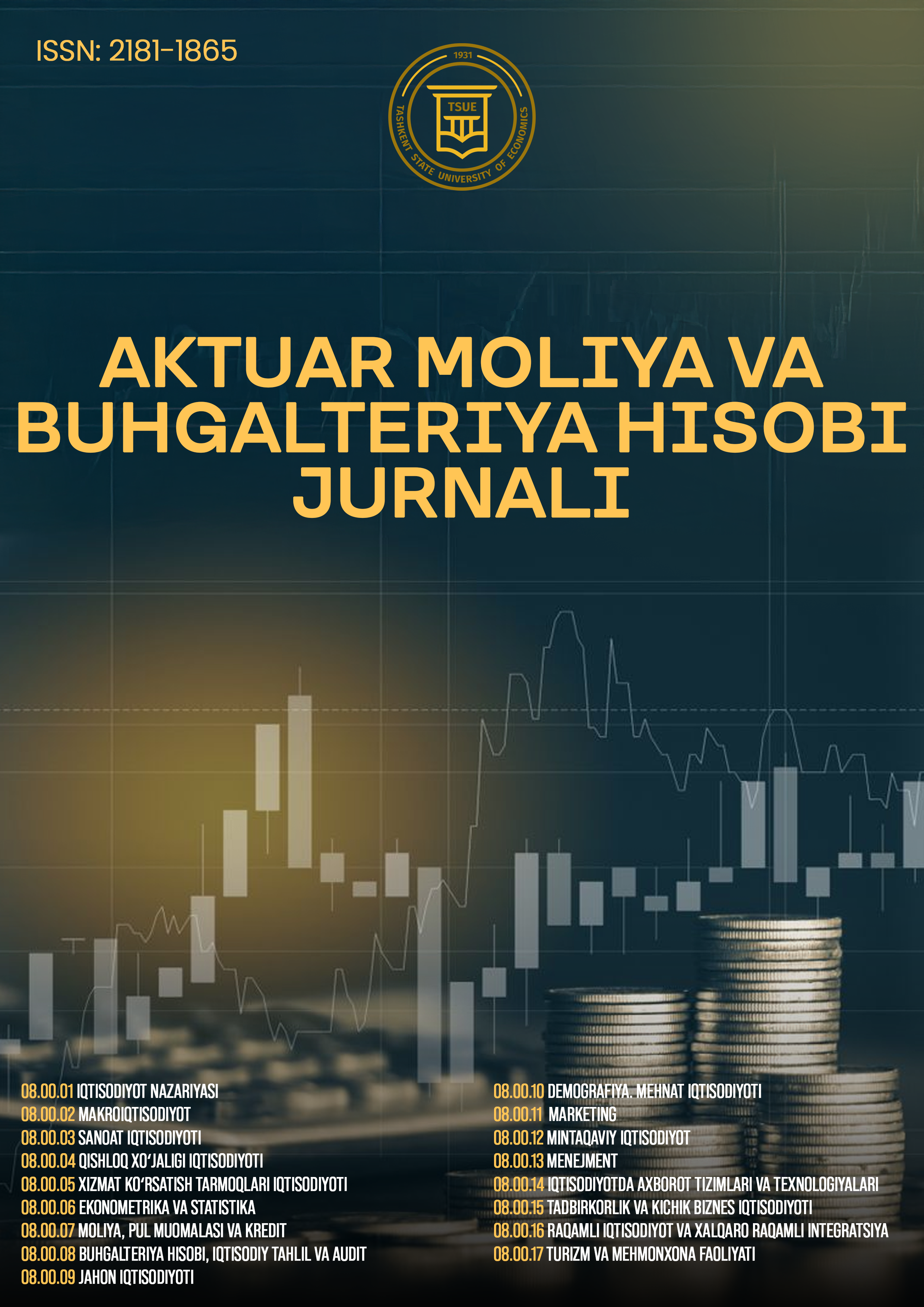THE IMPACT OF REMITTANCES ON CONSUMPTION PATTERNS OF KYRGYZ MIGRANT HOUSEHOLDS: PANEL DATA ANALYSIS
Keywords:
Consumption Patterns, Developing Countries, Expenditure, Household, International Migration, Kyrgyzstan, Remittance Flows.Abstract
This paper analyses whether remittances affect household consumption expenditure in Kyrgyzstan using Life in Kyrgyzstan Survey datasets collected during 2010-2016. We employ a measure of remittance as families who received remittance for the past 12 months and consumption is measured as both food and non-food expenditure separately. A remittance gravity model is estimated using panel data and a Two Stage Least Squares method was employed to tackle double endogeneity issue. We conclude that foreign remittances have an important role in making consumption decisions for Kyrgyz households. Moreover, this study supports the permanent income theory, which states that families accept remittances as permanent income and do not consider sources of income while making food and non-food expenditure decisions. Therefore, we provide evidence from Kyrgyzstan with policies intended to support remittance inflows which can in turn improve household consumption.
References
Atabaev, N. et al., (2014). Economic Growth and Remittances Inflow: Empirical Evidence from Kyrgyz Republic. Researchgate. Available from https://www.researchgate.net/publication/284456955_Economic_Growth_and_Remittan ces_Inflow_Empirical_Evidence_from_Kyrgyz_Republic [Accessed 11 December 2021].
Atamanov, A. and Van den Berg, M. (2012). Heterogeneous Effects of InternationalMigration and Remittances on Crop Income: Evidence from the Kyrgyz Republic. Repec. Available from EconPapers: Heterogeneous Effects of International Migrationand Remittances on Crop Income: Evidence from the Kyrgyz Republic (repec.org) [Accessed 15 April 2022].
Dhakal, S. and Oli, S. (2020). The Impact of Remittance on Consumption and Investment: A Case of Province Five of Nepal. SSRN. Available from https://papers.ssrn.com/sol3/papers.cfm?abstract_id=3649364 [Accessed 10 December2021].
Dhungana, R. and Pandit, J. (2014). Economic Impact of Remittance on Households.Nepjol. Available from https://www.nepjol.info/index.php/EL/article/view/14886 [Accessed 11 December 2021].
Ebeke, Ch. (2011). Macroeconomic Consequences of Remittances in Developing Countries. Archives. Available from https://tel.archives-ouvertes.fr/tel- 00606159/document [Accessed 10 December 2021].
IFAD (2017). Sending Money Home: Contributing to the SDGs, one family at a time.IFAD. Available from https://www.ifad.org/documents/38714170/39135645/Sending+Money+Home+-
+Contributing+to+the+SDGs%2C+one+family+at+a+time.pdf/c207b5f1-9fef-4877-9315- 75463fccfaa7 [Accessed 10 December 2021].
Mogilevsky, R. and Omorova, A. (2011). Assessing Development Strategies to Achievethe MDGs in The Kyrgyz Republic. UN. Available from https://www.un.org/en/development/desa/policy/capacity/output_studies/roa87_study_k gz.pdf [Accessed 11 December 2021].
Mondal, R. and Khanam, R. (2018). The Impacts of International Migrant’s Remittances on Household Consumption Volatility in Developing Countries. Researchgate. Availablefrom https://www.researchgate.net/publication/326541586_The_impacts_of_international_mi grants'_remittances_on_household_consumption_volatility_in_developing_countries [Accessed 10 December 2021].
Ratha, D. (2021). Global Remittance Flows in 2021: A Year of Recovery and Surprises. Worldbank. Available from https://blogs.worldbank.org/peoplemove/global-remittance- flows- 2021-year-recovery-and-surprises [Accessed 10 December 2021].
Shelburne, R. and Palacine, J. (2007). Remittances in the CIS: Their Economic Implications and a New Estimation Procedure. Repec. Available from https://ideas.repec.org/p/ece/dispap/2007_5.html [Accessed 11 December 2021].
Siddiqui, T. and Abrar, Ch. (2003). Migrant Worker Remittances and Micro-Finance in Bangladesh. ILO. Available from http://ilo.org/wcmsp5/groups/public/--- ed_emp/documents/publication/wcms_117970.pdf [Accessed 10 December 2021].
Tabuga, A. (2008). International Remittances and Family Expenditure Patterns: The Philippines. Gov. Available from https://dirp3.pids.gov.ph/ris/pjd/pidspjd08- 2remittances.pdf [Accessed 10 December 2021].
The World Bank (2020). World Bank Predicts Sharpest Decline of Remittances in Recent History. Worldbank. Available from https://www.worldbank.org/en/news/press- release/2020/04/22/world-bank-predicts-sharpest-decline-of-remittances-in-recent- history [Accessed 11 December 2021].
The World Bank Group (2018). Migration and Remittances. Worldbank. Available from https://openknowledge.worldbank.org/bitstream/handle/10986/29777/125632-WP- PUBLIC- MigrationandDevelopmentBrief.pdf [Accessed 11 December 2021].
Wang, D. et al. (2019). Remittances and Household Spending Strategies: Evidence from the Life in Kyrgyzstan Study, 2011-2013. Europepmc. Available from Remittances and Household Spending Strategies: Evidence from the Life in Kyrgyzstan Study, 2011-2013. - Abstract - Europe PMC [Accessed 11 April 2022].
Waqas, J. (2017). Impact of Remittances on Consumption and Investment (Case Studyof Tehsil Sargodha, Punjab, Pakistan). Sciepub. Available from http://www.sciepub.com/JFE/abstract/7711 [Accessed 11 December 2021].
Yoshino, N. et al., (2019). Determinants of International Remittance Inflows in Middle Income Countries in Asia and the Pacific. ADB. Available from https://www.adb.org/sites/default/files/publication/506406/adbi-wp964.pdf [Accessed 11 December 2021].


